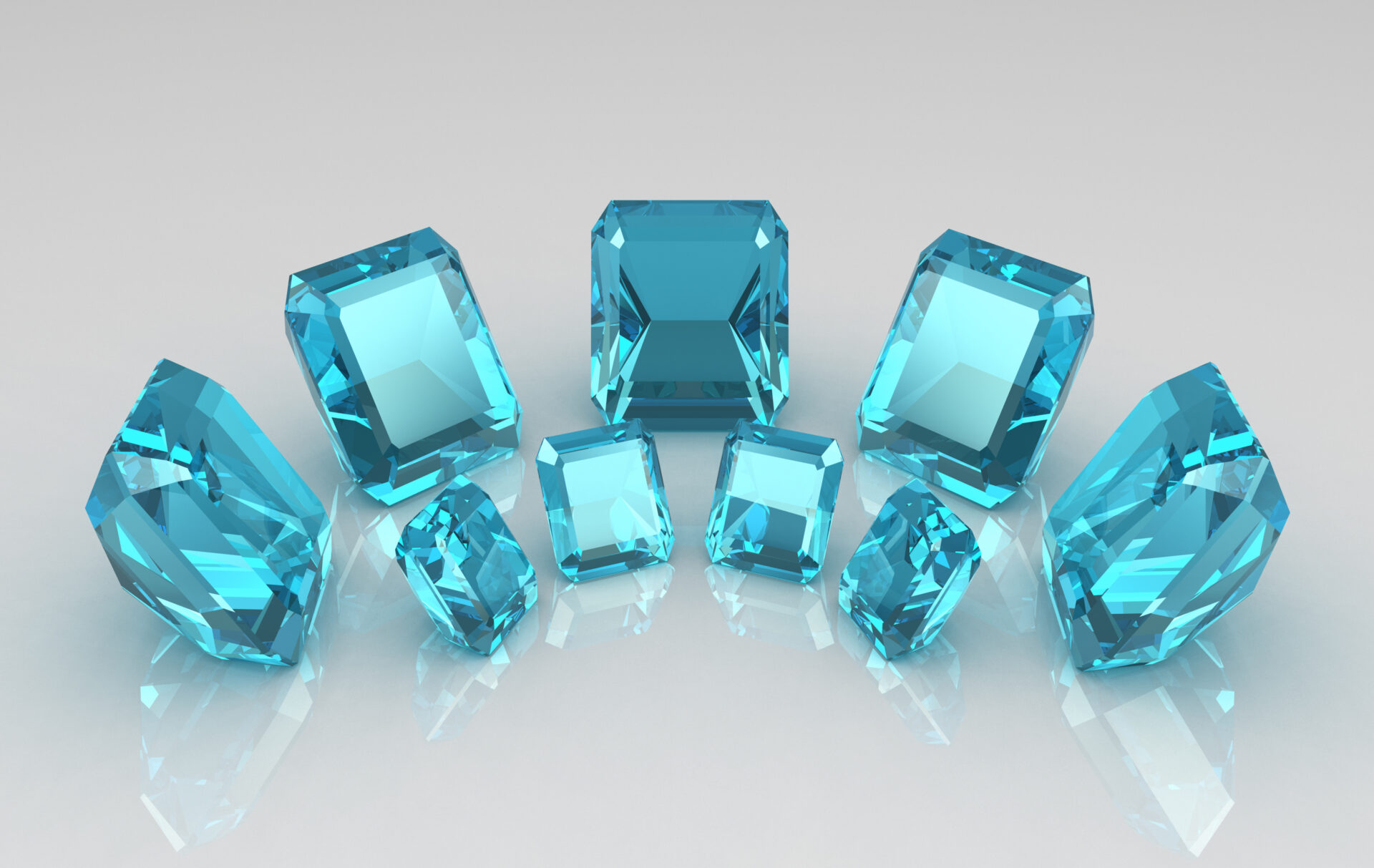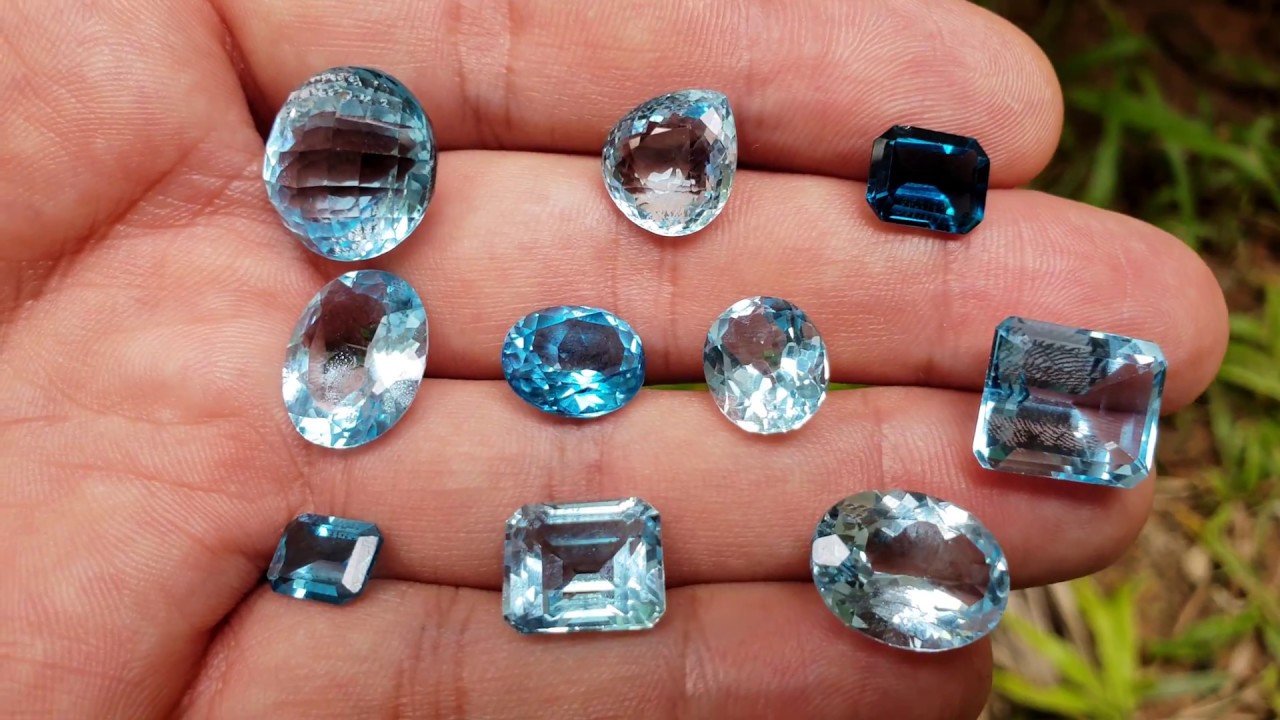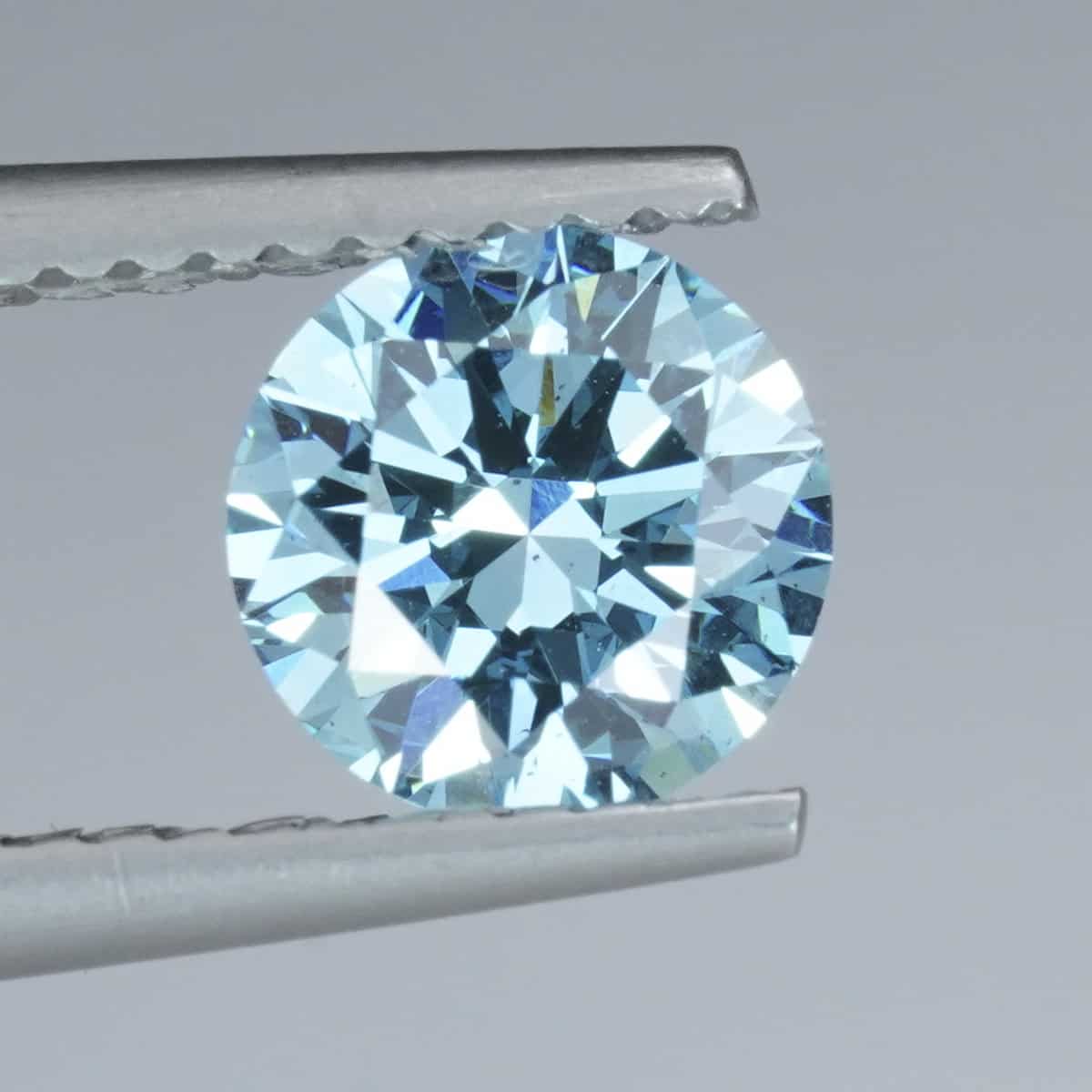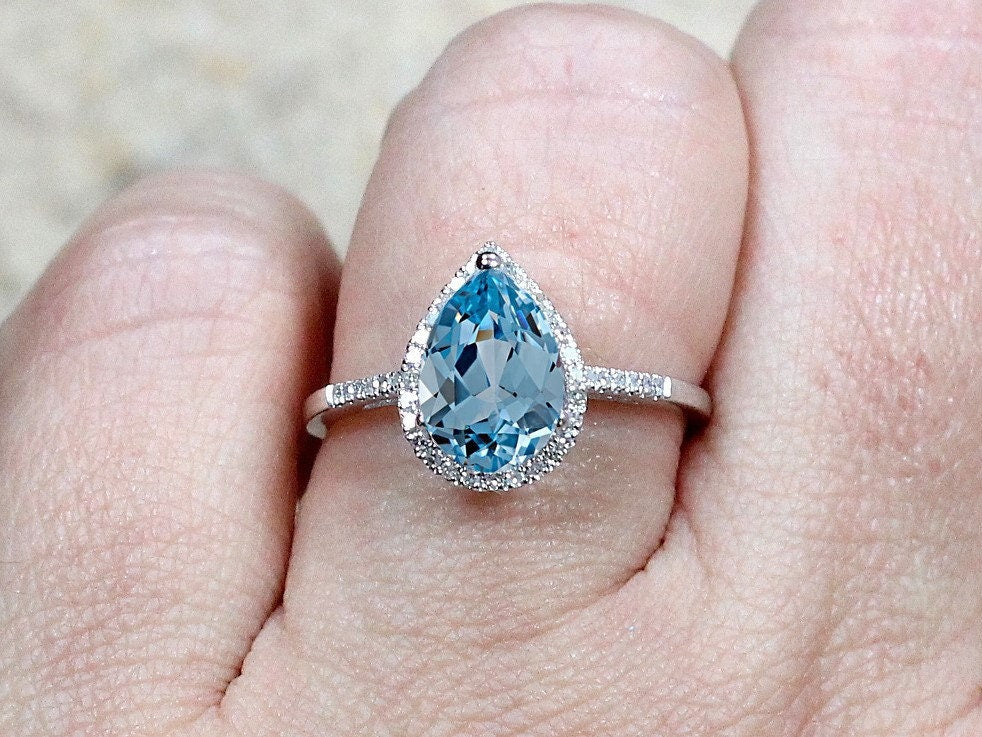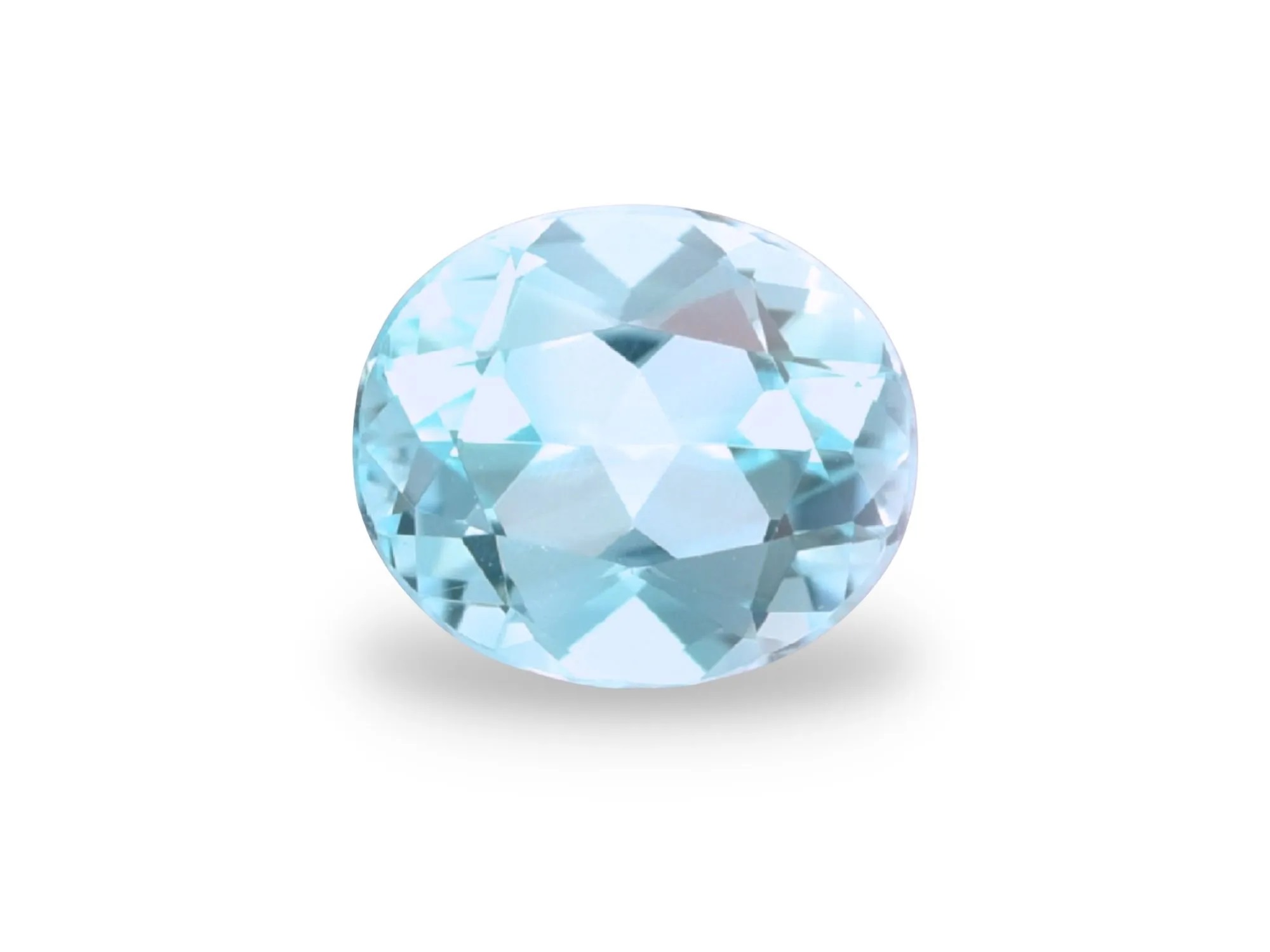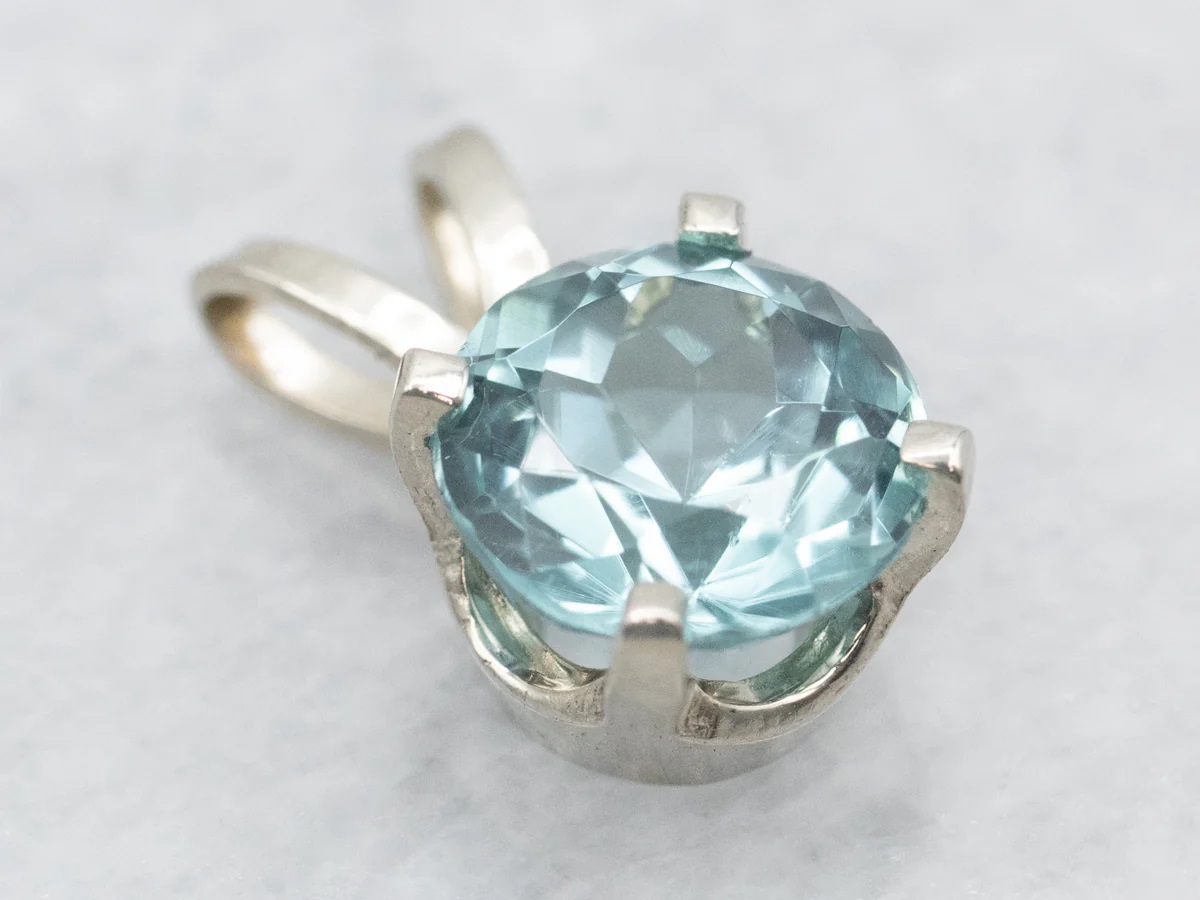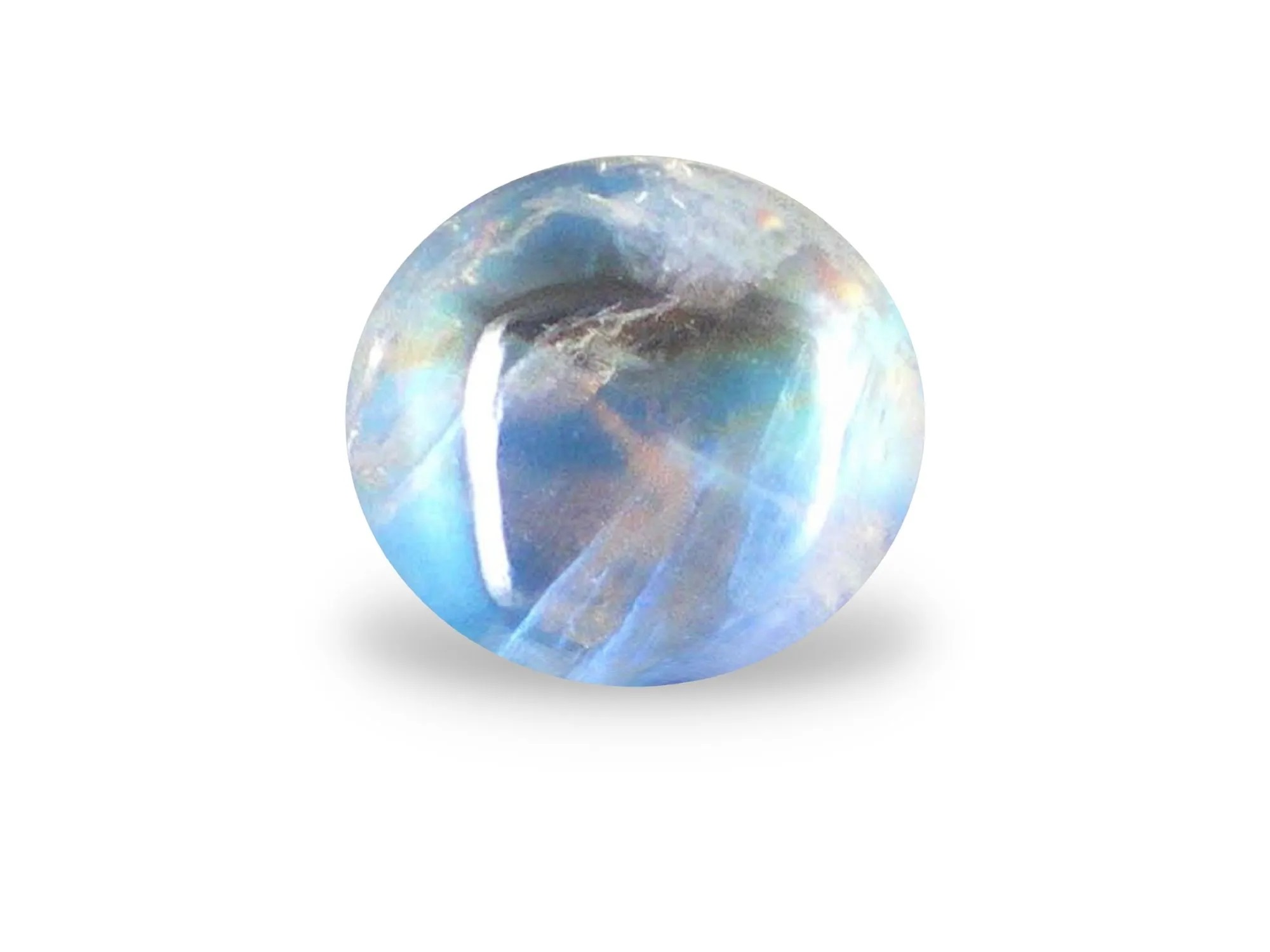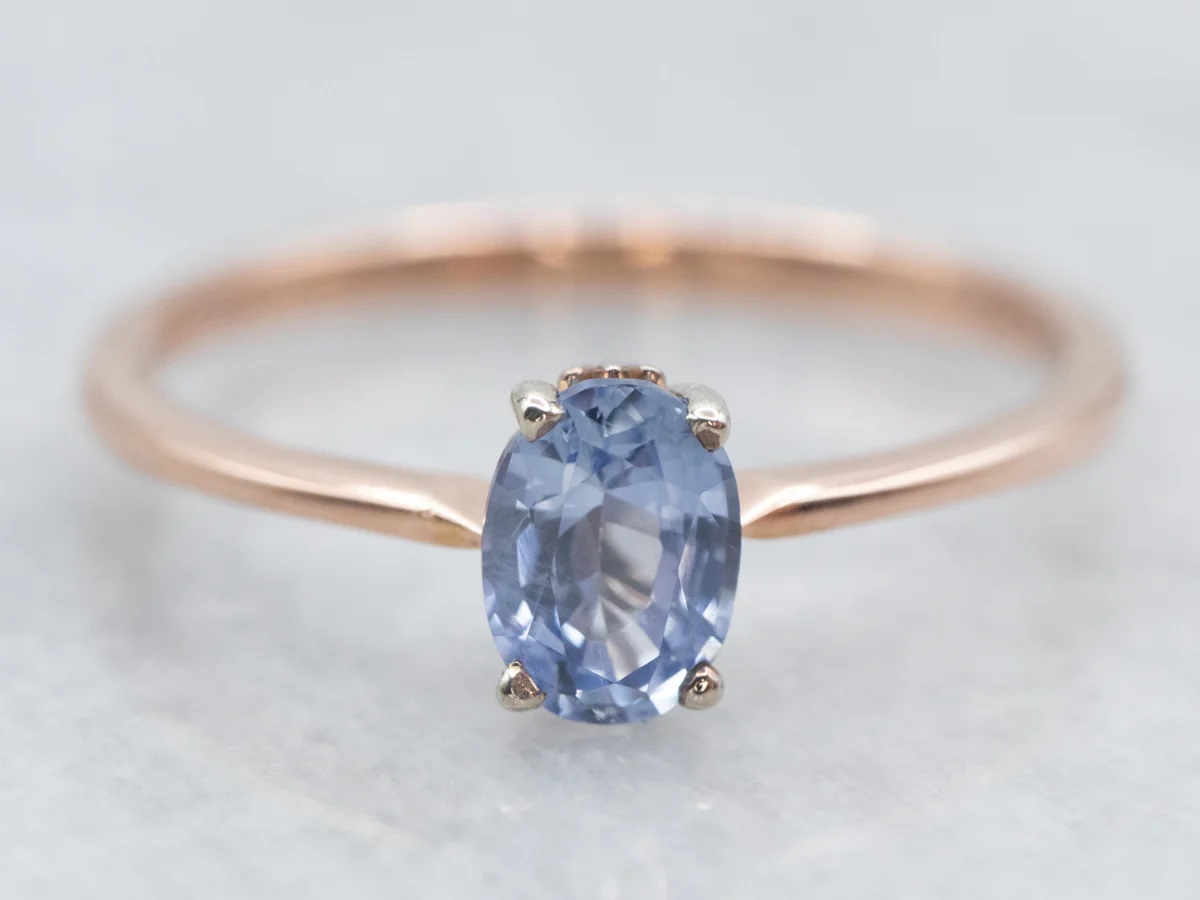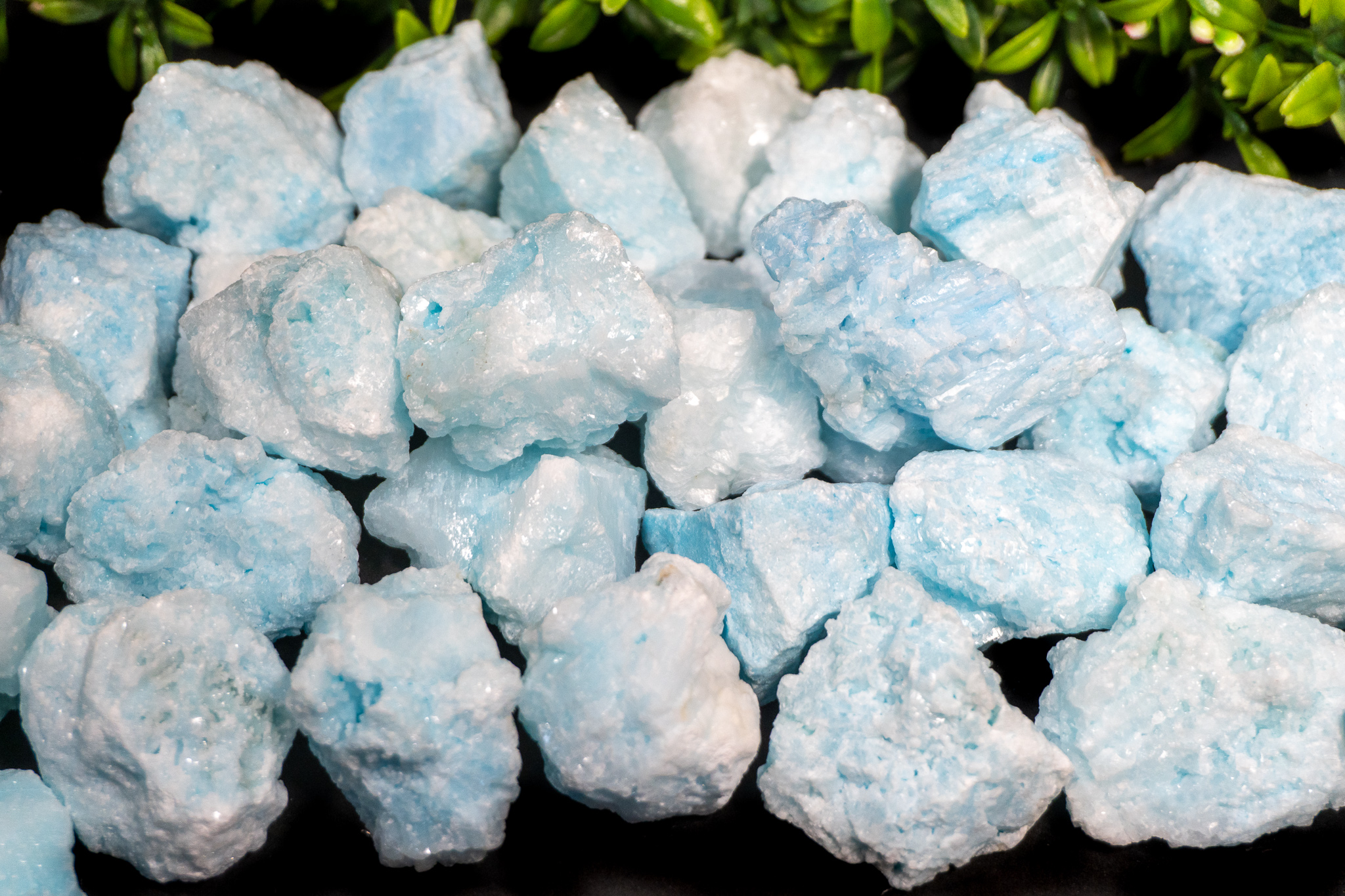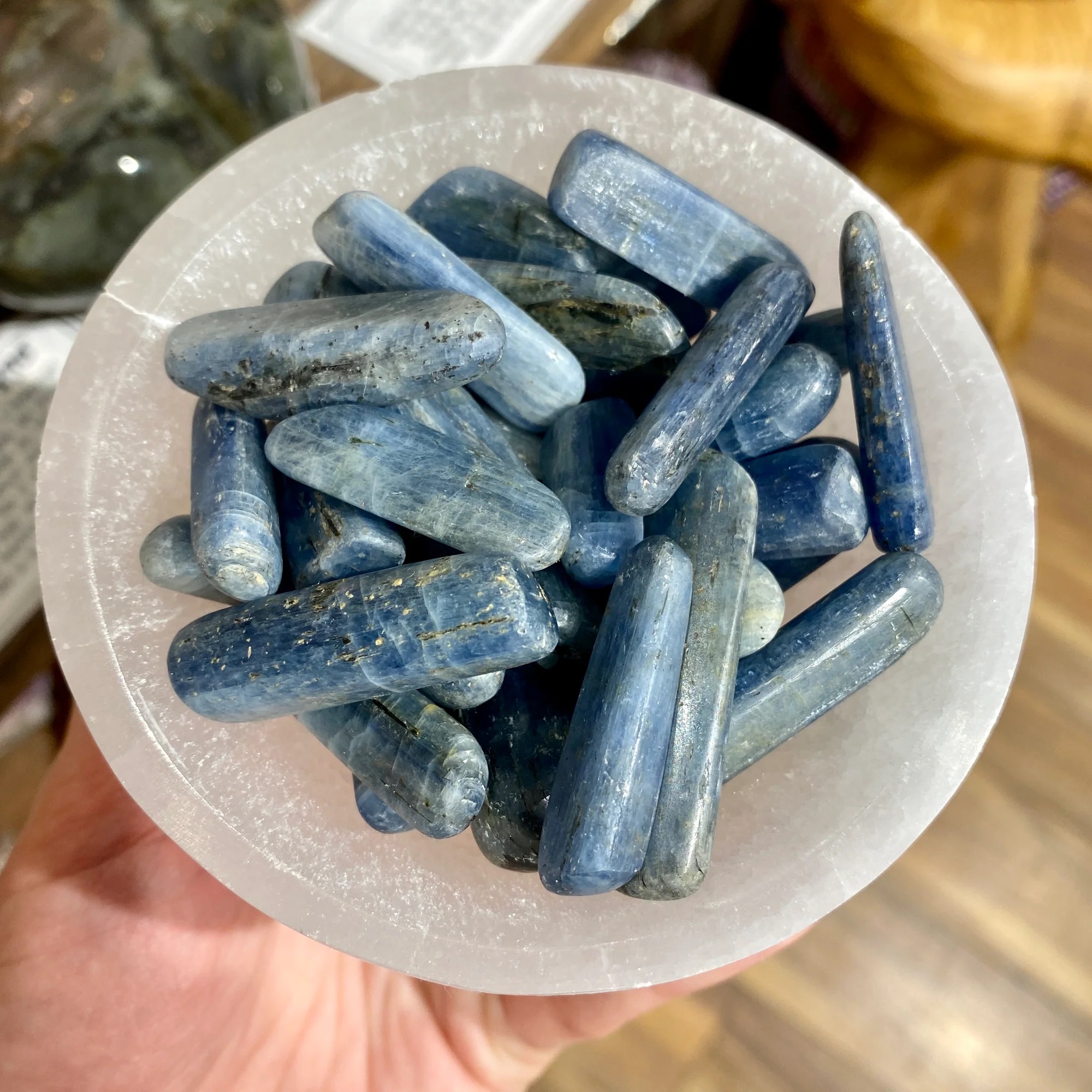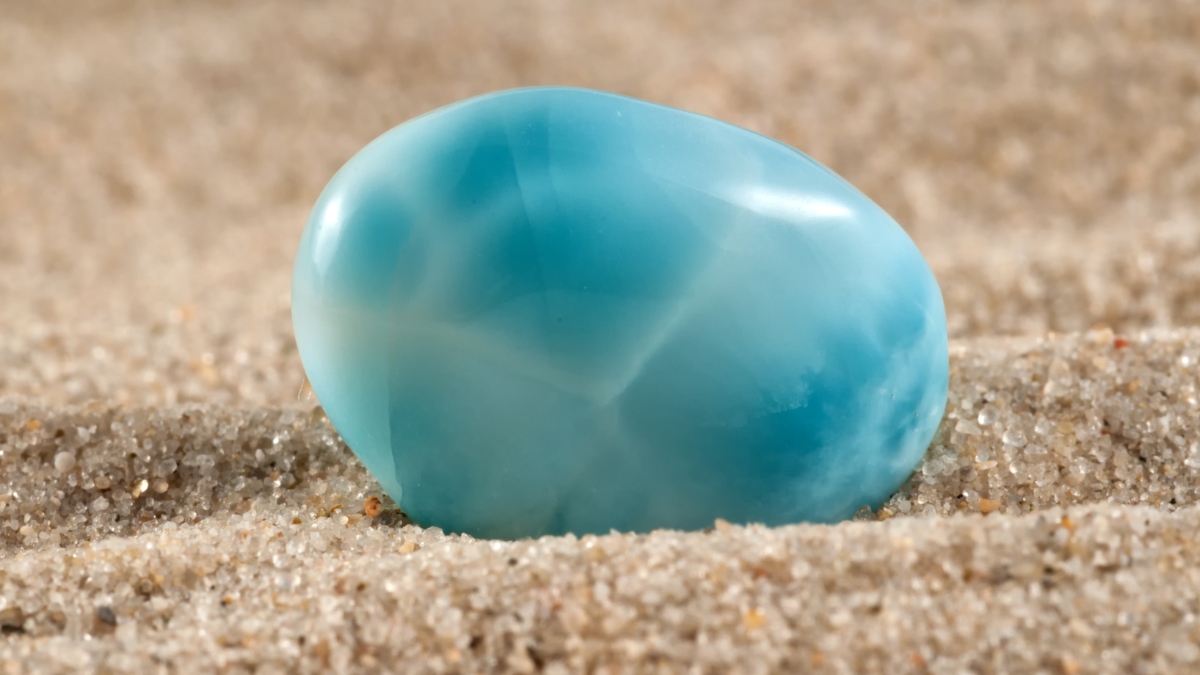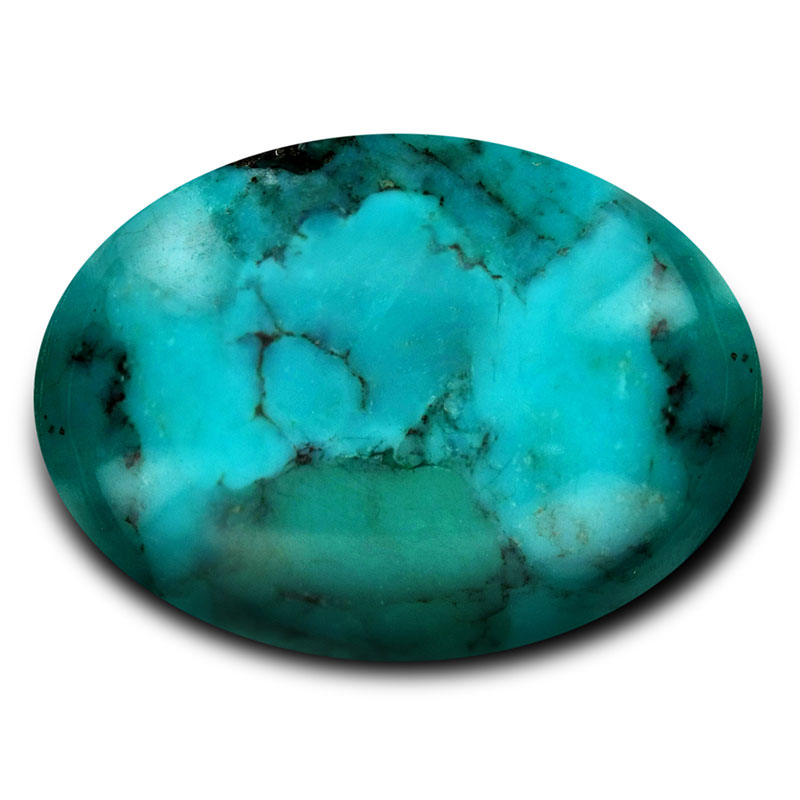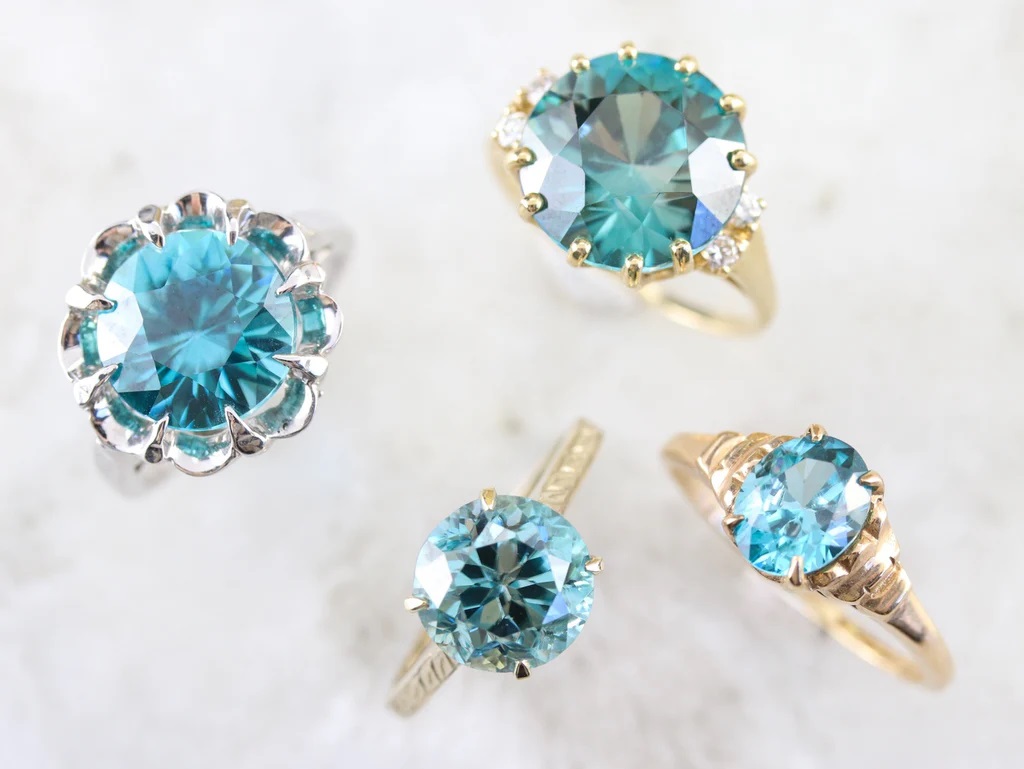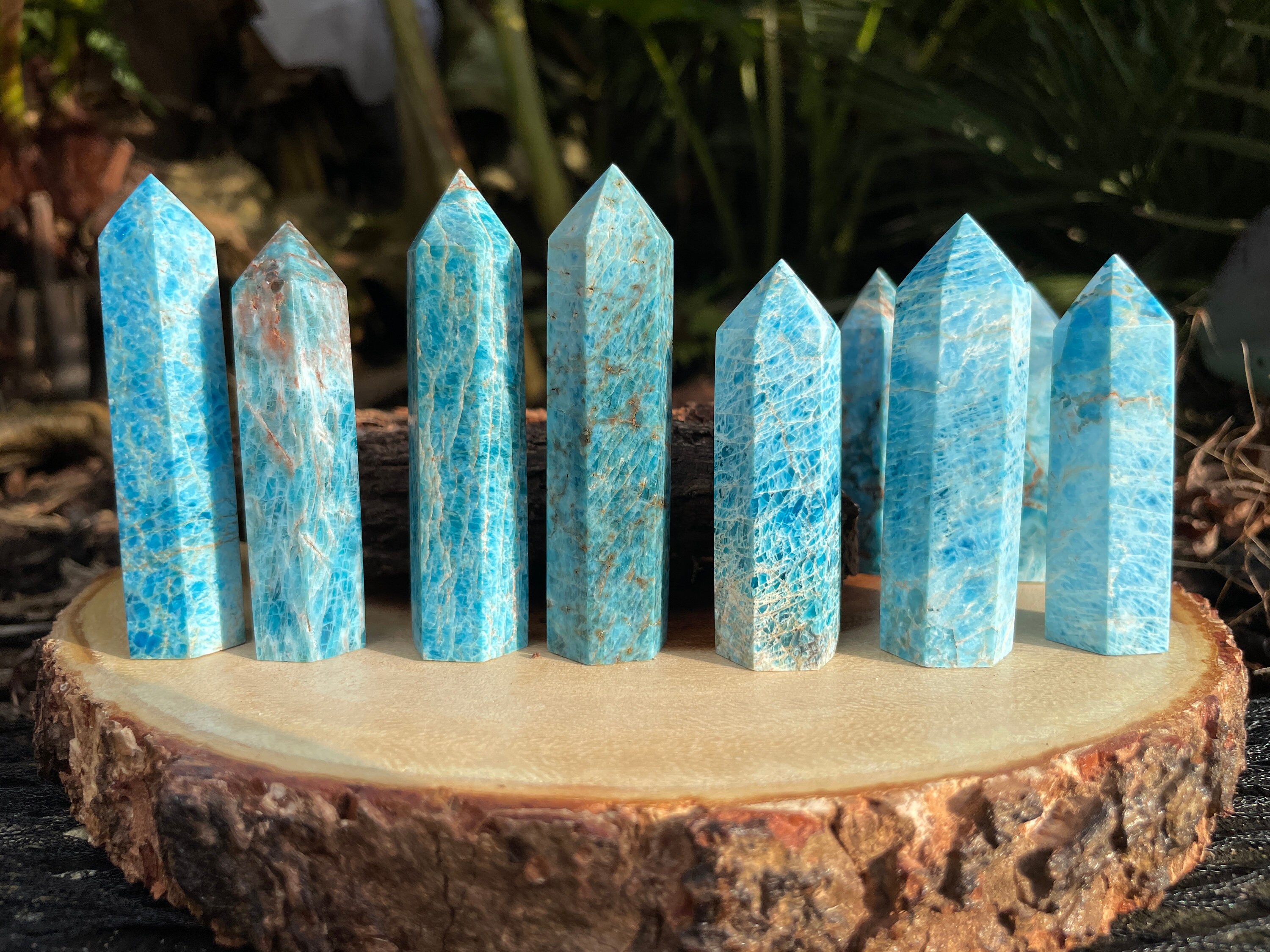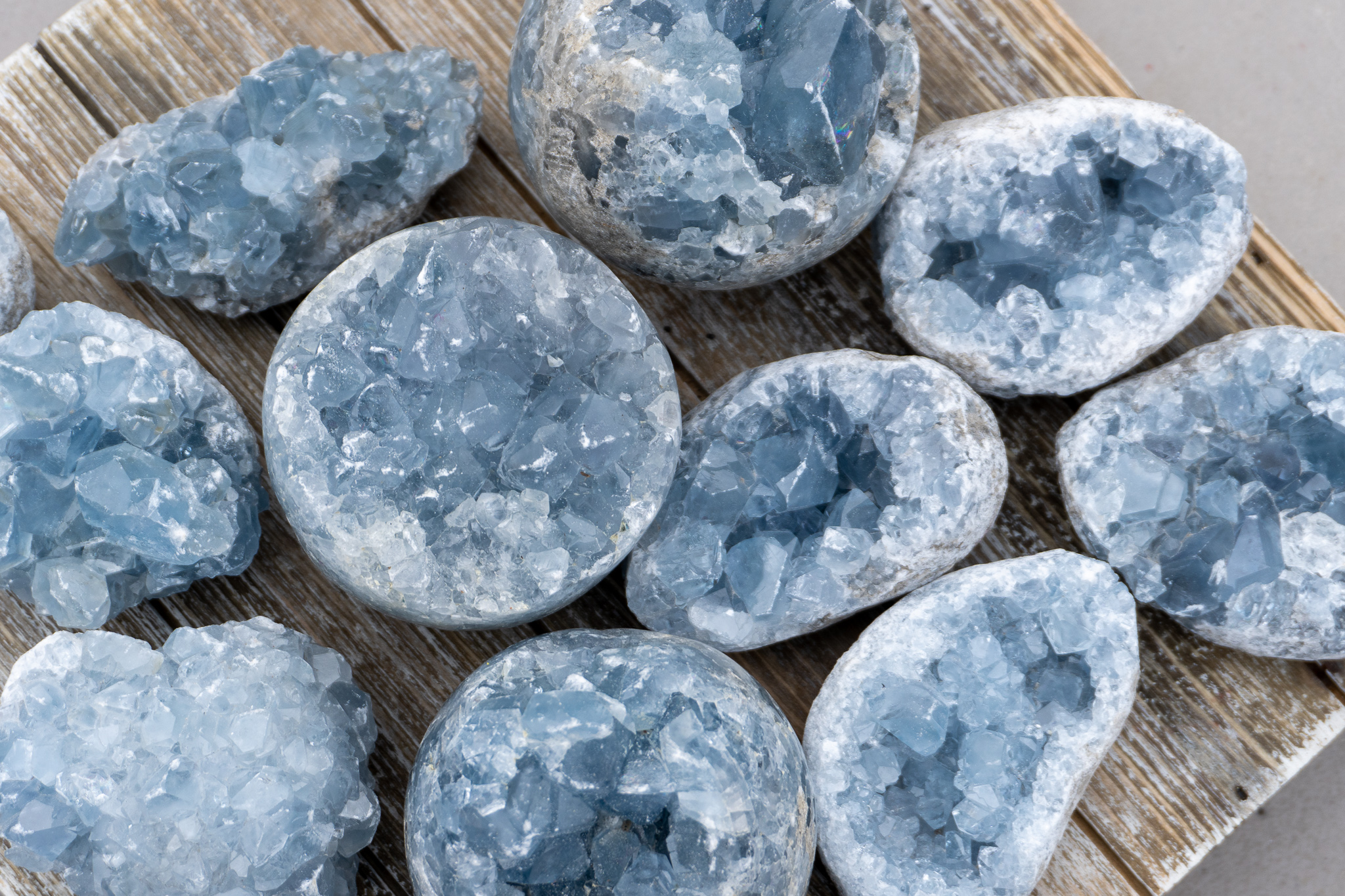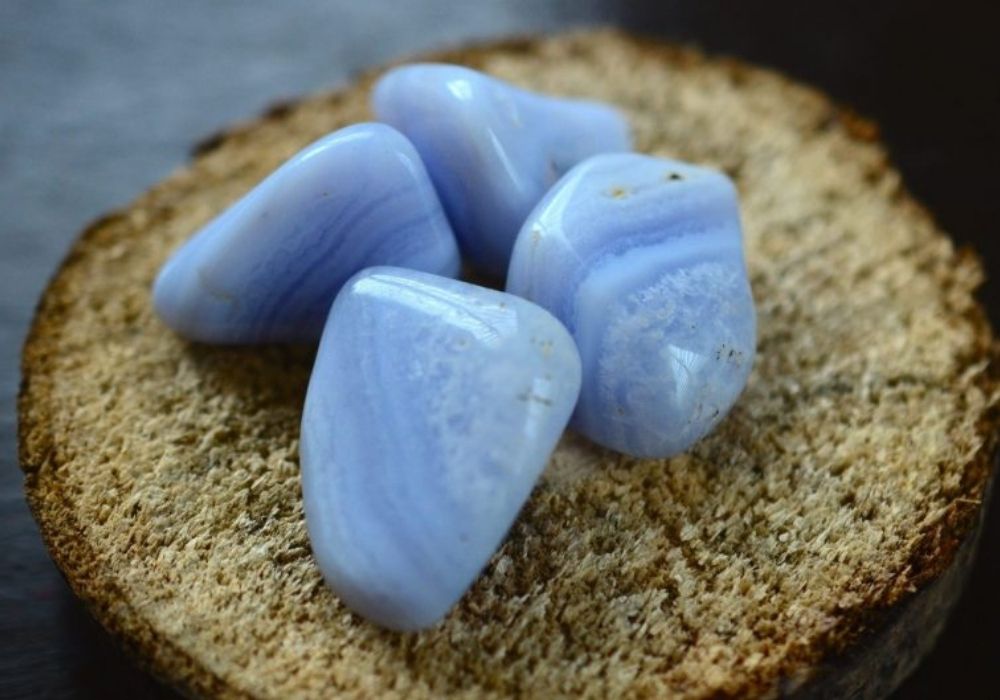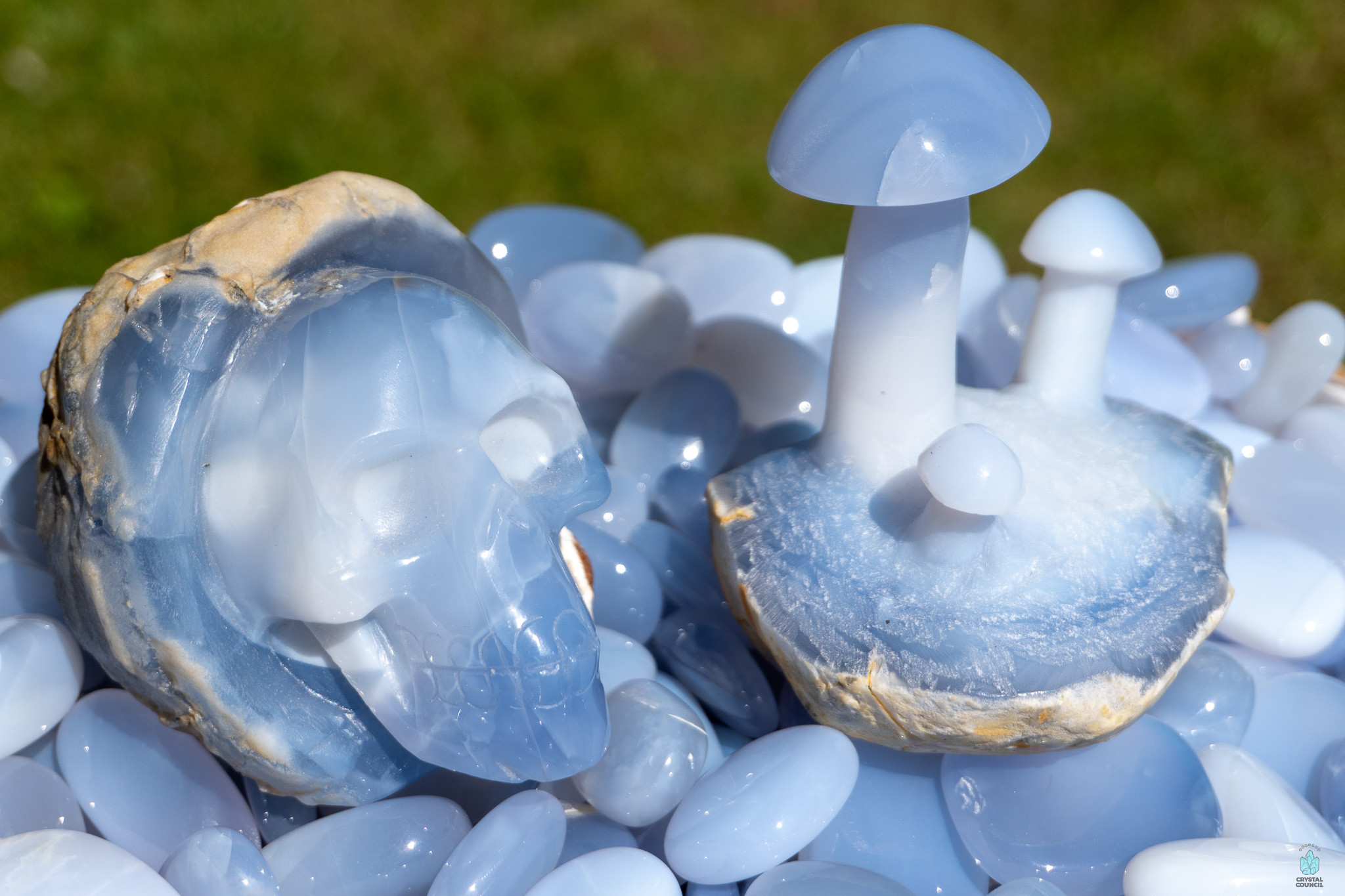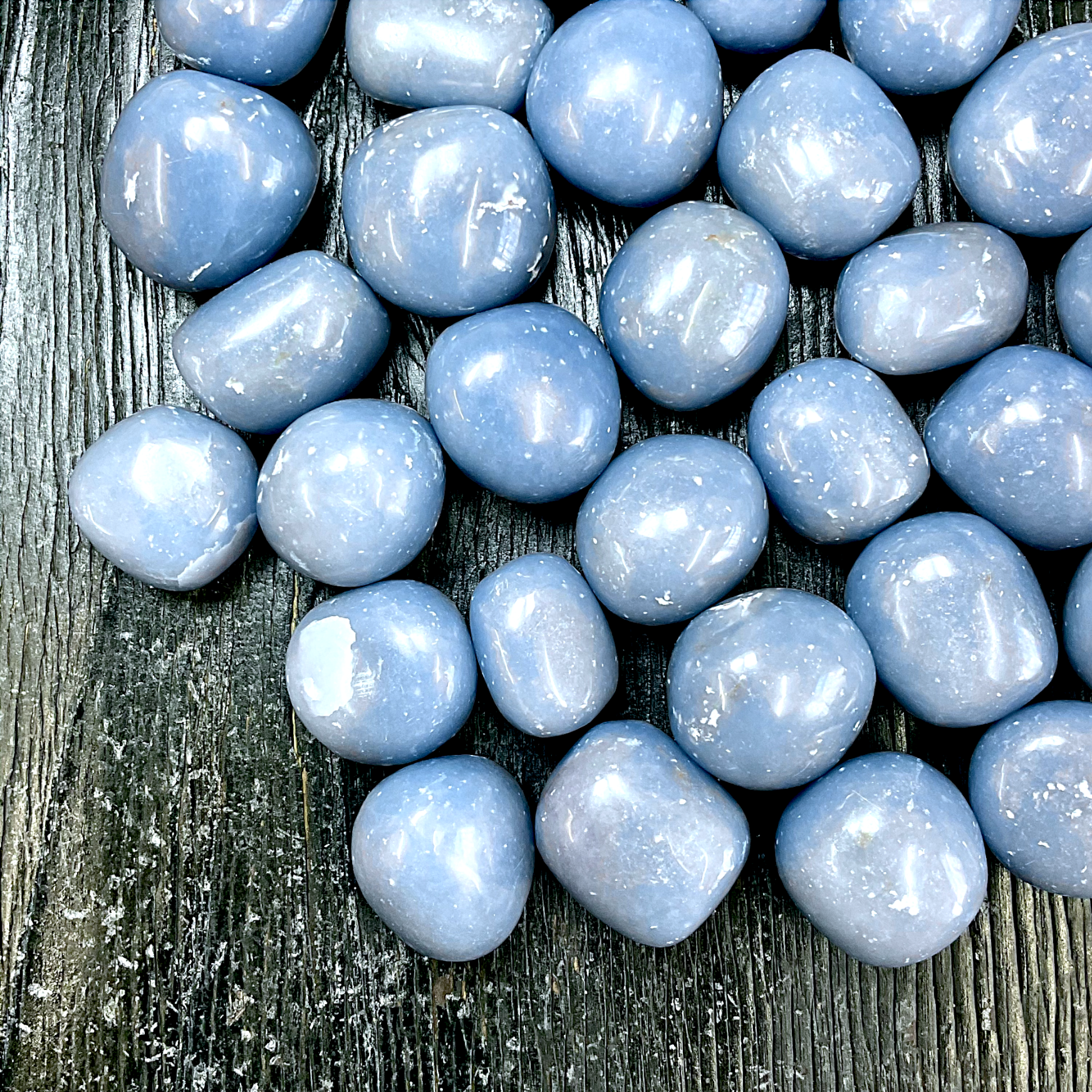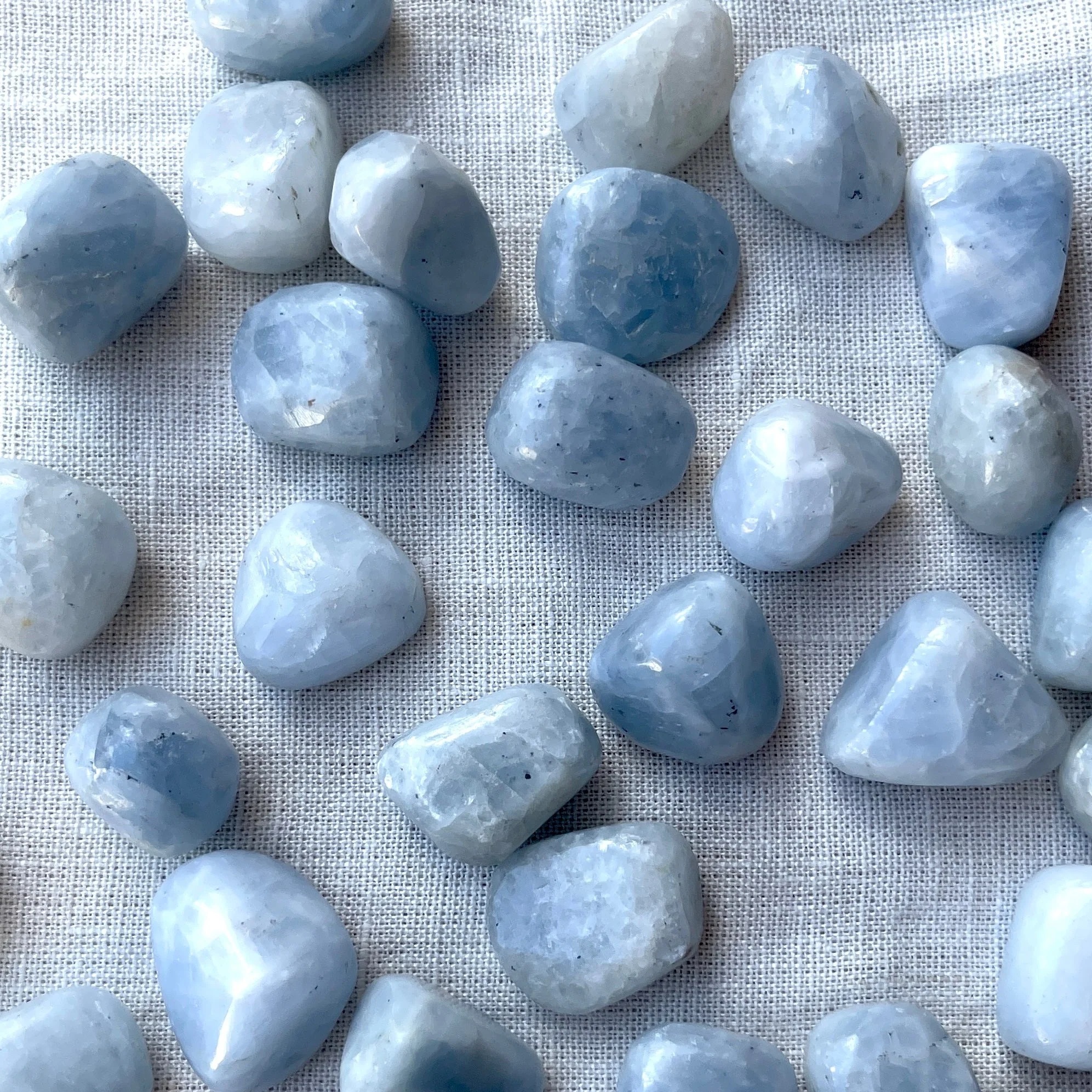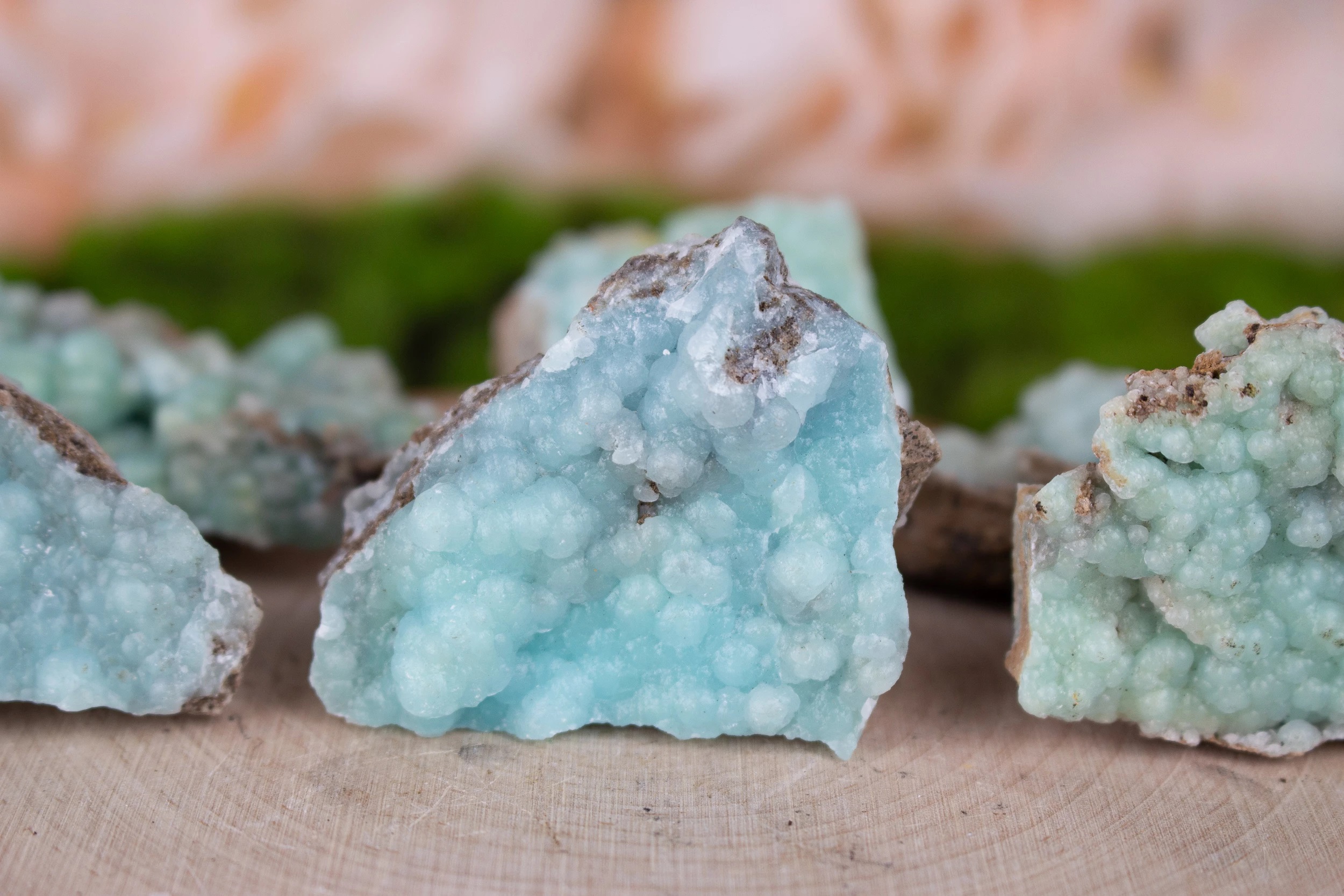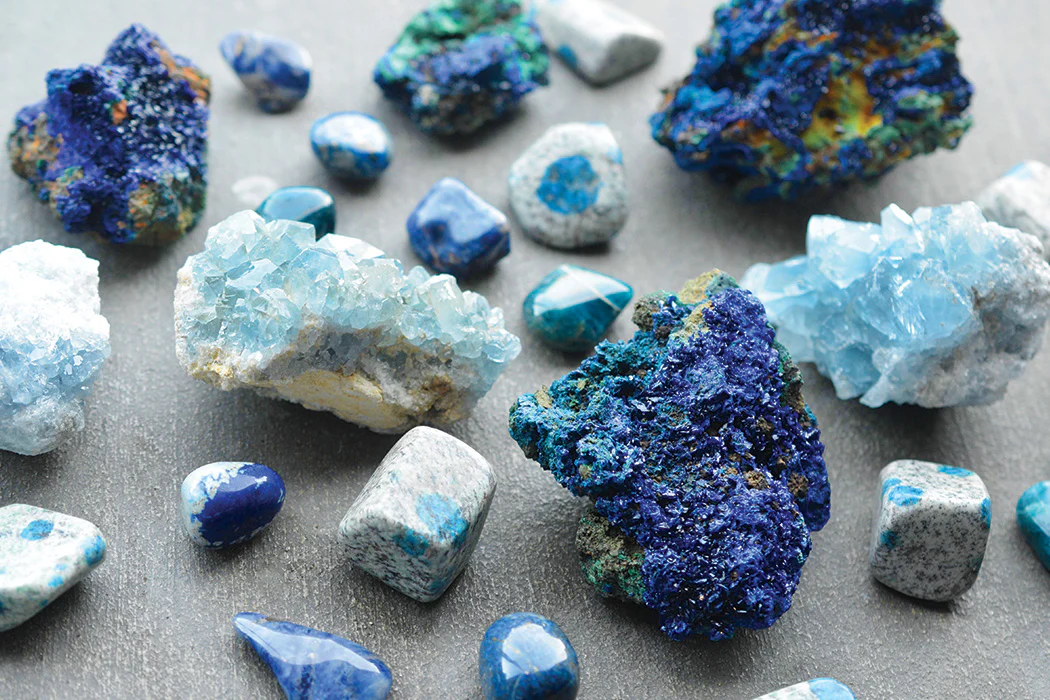
Light blue gemstoneshave a calming, clarifying energy that's been treasured across cultures for centuries. Associated with tranquility, communication, and spiritual clarity, these stones are often linked to the Throat Chakra, helping with self-expression and inner peace. But beyond the spiritual, each gemstone has unique physical traits, geological origins, and historical uses.
This article offers a comprehensive look at the most powerful light blue crystals, exploring their meanings, properties, chakra connections, and even how to care for and pair them effectively.
List Of Light Blue Gemstones
1. Aquamarine
- Color:Pale to deep sea-blue
- Chakra:Throat, Heart
- Planet:Neptune
- Element:Water
- Zodiac:Pisces, Aquarius
Meaning & Uses:Aquamarine is known as the stone of courage and truth. It encourages honest communication and emotional release. Ancient sailors used it as a talisman for safe passage across water.
Best Pairing:Combine with Clear Quartz for amplified spiritual clarity.
2. Blue Topaz
- Color:Sky blue to Swiss blue
- Chakra:Throat, Third Eye
- Planet:Jupiter
- Element:Air
- Zodiac:Sagittarius, Virgo
Meaning & Uses:A stone of good fortune, truth, and manifestation. Supports focused intention. Its brilliance and affordability make it a favorite for designers and jewelryenthusiasts alike. The blue color in topazis often induced by irradiation and heat treatment of colorless topaz.
Best Pairing:Citrine for manifesting abundance.
Related Reading: Blue Topaz Birthstone - A Calming Stone For The Month Of December
3. Light Blue Diamond
- Color: Pale to icy blue hues
- Chakra: Crown, Throat
- Element: Air
- Zodiac: Aries, Leo
Meaning & Uses: Light Blue Diamondssymbolize clarity, strength, and purity. They are believed to amplify thoughts and intentions, making them powerful tools for manifestation and spiritual growth.
Best Pairing: Combine with Clear Quartz to further enhance clarity and intention-setting capabilities.
4. Light Blue Spinel
- Color: Soft pastel to vibrant sky blue
- Chakra: Throat
- Element: Air
- Zodiac: Sagittarius
Meaning & Uses: Light Blue Spinel is associated with revitalization and the release of stress. It encourages a fresh perspective and is often used to rejuvenate one's energy and outlook.
Best Pairing: Pair with Aquamarine to promote emotional balance and clear communication.
5. Paraiba Tourmaline
- Color: Electric blue to turquoisewith a neon glow
- Chakra: Heart, Throat
- Element: Water
- Zodiac: Libra
Meaning & Uses: Paraiba Tourmalineis known for its vibrant energy, promoting joy, creativity, and open-hearted communication. It's a stone that encourages a zest for life and emotional healing.
Best Pairing: Combine with Pink Tourmaline to balance emotional energies and enhance loving communication.
6. Light Blue Indicolite (Blue Tourmaline)
- Color: Light to deep blue shades
- Chakra: Throat, Third Eye
- Element: Water
- Zodiac: Libra, Pisces
Meaning & Uses: Indicolite is celebrated for its ability to facilitate deep meditation and enhance intuitive abilities. It aids in clear communication and spiritual awareness.
Best Pairing: Pair with Amethyst to deepen meditation practices and spiritual connections.
7. Light Blue Moonstone
- Color: Pale blue with a soft, ethereal glow
- Chakra: Third Eye, Crown
- Element: Water
- Zodiac: Cancer
Meaning & Uses: Light Blue Moonstone is known for its calming and soothing properties. It enhances intuition and promotes emotional balance, making it ideal for those seeking inner peace.
Best Pairing: Combine with Labradorite to boost intuitive insights and spiritual growth.
8. Light Blue Sapphire
- Color: Soft to medium blue tones
- Chakra: Throat, Third Eye
- Element: Air
- Zodiac: Virgo, Libra
Meaning & Uses: Light Blue Sapphireis associated with wisdom, integrity, and serenity. It aids in clear communication and is often used to enhance mental clarity and focus.
Best Pairing: Pair with Blue Topaz to amplify mental acuity and articulate expression.
9. Blue Aragonite
- Color: Pale to vibrant sky blue, often with translucent bands
- Chakra: Throat, Third Eye
- Planet: Venus
- Element: Water
- Zodiac: Capricorn, Aquarius
Meaning & Uses:Blue Aragonite is a soothing stone that promotes emotional balance and stress relief. It enhances intuition and aids in clear communication, making it ideal for resolving conflicts peacefully. Its gentle energy supports meditation and connecting with higher consciousness.
Best Pairing:Rose Quartz for harmonizing emotional and spiritual energies.
10. Kyanite (Blue Variety)
- Color:Ice to deep ocean blue
- Chakra:Throat, Third Eye
- Planet:Neptune
- Element:Water, Air
- Zodiac:Taurus, Libra
Meaning & Uses:Never needs cleansing. Aligns all chakras instantly. Promotes telepathy and dream recall.
Best Pairing:Black Tourmaline for grounding spiritual downloads.
11. Larimar
- Color: Caribbean blue with white cloud-like streaks
- Chakra: Throat, Heart, Crown
- Planet: Neptune
- Element: Water
- Zodiac: Leo, Pisces
Meaning & Uses:Known as the Dolphin Stone or Stone of Atlantis, Larimar promotes inner wisdom, feminine power, and emotional healing.
Best Pairing:Pair with Moonstone for divine feminine energy and emotional harmony.
12. Turquoise
- Color: Blue to greenish-blue with matrix veins
- Chakra: Throat
- Planet: Venus
- Element: Earth
- Zodiac: Sagittarius
Meaning & Uses:Sacred to Native American and Tibetan cultures. Protects travelers and clears blockages in expression.
Best Pairing:Coral or Jasper for balancing male and female energies.
Dive Deeper: Types Of Turquoise - Five Gentle Blue Turquoise Tones
13. Light Blue Zircon
- Color: Bright sky blue with high brilliance
- Chakra: Throat
- Element: Air
- Zodiac: Sagittarius
Meaning & Uses: Light Blue Zircon is known for its grounding yet energizing frequency. While it stimulates mental clarity and precise thinking, it also aids in emotional healing and boosting self-esteem. This stone is excellent for speakers, writers, and anyone who needs to communicate with impact and honesty.
Best Pairing: Pair with Citrineto combine mental clarity with creativity and confidence. This duo enhances both self-expression and a positive mindset, especially in professional or public settings.
14. Light Blue Apatite
- Color: Vibrant neon to soft Caribbean blue
- Chakra: Throat, Third Eye
- Element: Air
- Zodiac: Gemini
Meaning & Uses: Apatite is known for enhancing intellect, creativity, and motivation. It's particularly beneficial for those seeking clarity in communication and the pursuit of personal goals.
Best Pairing: Combine with Fluorite to amplify mental clarity and focus.
15. Celestite
- Color:Light blue-gray crystal clusters
- Chakra:Crown, Throat
- Planet:Moon
- Element:Air
- Zodiac:Gemini, Libra
Meaning & Uses:Celesiteencourages angelic connection, peaceful sleep, and spiritual insight. Often placed in bedrooms or meditation spaces.
Best Pairing:Angelite for enhanced spiritual frequency.
16. Blue Lace Agate
- Color: Soft baby blue with lacy white bands
- Chakra: Throat
- Planet: Mercury
- Element: Air
- Zodiac: Gemini, Pisces
Meaning & Uses:A gentle stone of peace and articulation. It soothes anxiety and helps with speaking your truth without fear.
Best Pairing:Works well with Selenite to maintain calm mental energy.
17. Blue Chalcedony
- Color:Translucent light blue
- Chakra:Throat
- Planet:Mercury
- Element:Air
- Zodiac:Cancer, Sagittarius
Meaning & Uses:Boosts creativity, diplomacy, and public speaking. Calms overactive thoughts.
Best Pairing:Lapis Lazulifor truthful communication.
18. Angelite
- Color:Soft chalky blue
- Chakra:Throat, Third Eye, Crown
- Planet:Uranus
- Element:Air
- Zodiac:Aquarius
Meaning & Uses:A bridge between earthly and angelic realms. Used for communication with spirit guides.
Best Pairing:Amethyst for psychic and intuitive development.
19. Blue Calcite
- Color: Pale blue, opaque
- Chakra: Throat, Third Eye
- Planet: Neptune
- Element: Water
- Zodiac: Cancer
Meaning & Uses:Great for decompressing after stress. Helps students and speakers absorb and articulate ideas.
Best Pairing:Hematite for focus and balance.
20. Smithsonite (Blue Variety)
- Color: Silky, opaque powder blue
- Chakra: Throat, Heart
- Planet: Moon
- Element: Water
- Zodiac: Virgo
Meaning & Uses:Promotes inner child healing, emotional comfort, and love.
Best Pairing:Rhodochrosite for heart healing.
Also Check Out: 40 Dark Blue Gemstones - Comprehensive List With Pics
The Significance And Symbolism Of Light Blue Gemstones
Beyond their visual appeal, light blue gemstonescarry rich symbolism and are often associated with specific metaphysical properties. Their gentle hues evoke a sense of tranquility and openness, influencing their perceived meanings:
Calm and Peace:The soothing tones of light blue are often linked to serenity, peace, and emotional balance. These gemstones are believed to help reduce stress and anxiety, fostering a sense of inner harmony.
Communication and Clarity:Light blue is also associated with communication, self-expression, and clarity of thought. Gemstones in this color range are thought to enhance verbal skillsand promote honest and open dialogue, resonating with the throat chakra in metaphysical practices.
Inspiration and Creativity:The airy and expansive nature of light blue can inspire creativity, imagination, and new ideas. These gems are often used to stimulate the mind and encourage artistic expression.
Trust and Loyalty:Certain light blue gemstones, like sapphire, are traditionally associated with trust, loyalty, and fidelity, making them popular choices for engagement ringsand commitment jewelry. This association dates back centuries, with sapphires being favored by royalty.
Healing and Well-being:In various crystal healing practices, light blue gemstones are believed to have soothing and healing properties, particularly related to the throat chakra, which governs communication and self-expression. Aquamarine, for instance, has been historically linked to soothing sore throats and calming anxieties.
Top Light Blue Gemstones For Specific Uses
- For Everyday Wear:Blue Topaz is an excellent choice due to its durability (Mohs 8), affordability, and beautiful range of blue shades. Aquamarine is also suitable but generally comes at a higher price point.
- For Special Occasions and Heirloom Pieces:Light blue Sapphire, with its exceptional hardness (Mohs 9) and timeless elegance, is ideal for investment pieces and jewelry meant to be passed down through generations.
- For Unique and Statement Jewelry:Larimar, with its distinctive patterns and limited availability, makes for truly unique and eye-catching jewelry. Blue Apatite's vibrant neon hues also offer a striking alternative.
- For Those Seeking Metaphysical Properties:Aquamarine is often chosen for its calming and communication-enhancing properties, while Blue Moonstone is favored for its connection to intuition and emotional balance.
How To Care For Light Blue Gemstones
Because light blue gemstones come in a variety of hardness levels and types, it’s essential to care for them properly to preserve their beauty and longevity. General care tips include:
- Avoid harsh chemicals: Keep your gemstones away from household cleaners and perfumes to avoid damage.
- Clean with a soft cloth: Use a soft, damp cloth to gently clean your gemstones. For more stubborn dirt, mild soap and warm water can be used.
- Store safely: When not in use, store your gemstones separately in soft cloth pouches or jewelry boxes to prevent scratches.
FAQs About Light Blue Gemstones
What Are The Most Popular Light Blue Gemstones?
Some of the most popular light blue gemstones include aquamarine, blue chalcedony, turquoise, larimar, and blue opal. These stones are favored for their soft, calming hues and are commonly used in jewelry and healing practices.
Are Light Blue Gemstones Rare?
While light blue gemstones can be rare, many varieties, such as aquamarine and turquoise, are more readily available. However, stones like benitoite and tanzanite are considered rare due to their limited geographical locations or scarcity in nature.
What Is The Most Expensive Light Blue Gemstone?
Among the light blue gemstones, tanzanite is one of the most expensive due to its rarity and striking deep blue to violet hues. Its limited availability, primarily found in Tanzania, adds to its value.
How Do I Take Care Of Light Blue Gemstones?
Most light blue gemstones, such as aquamarine and blue chalcedony, are relatively durable but should still be handled with care. To preserve their color and shine, avoid exposure to harsh chemicals, excessive sunlight, and physical impact.
Are Light Blue Gemstones Rare?
The rarity varies greatly. Larimar is quite rare due to its single source. High-quality natural light blue sapphires are also rare and command high prices. Blue topaz, especially the treated varieties, is more common. Aquamarine's rarity depends on the depth and saturation of its blue color.
What Are The Metaphysical Properties Associated With Light Blue Gemstones?
Common associations include promoting calmness, peace, and emotional balance. They are often linked to enhancing communication, clarity of thought, and inspiring creativity. Some, like aquamarine, are specifically tied to the throat chakra and self-expression.
Conclusion
Light blue gemstones are not only beautiful but also rich in symbolism and healing properties. Their soft, calming colors have made them favorites in both the world of fine jewelry and spiritual practices.
From their captivating aesthetic to their rich symbolism and perceived metaphysical energies, light blue gemstones continue to enchant and inspire, guiding us towards a deeper connection with the tranquil beauty of the natural world.
